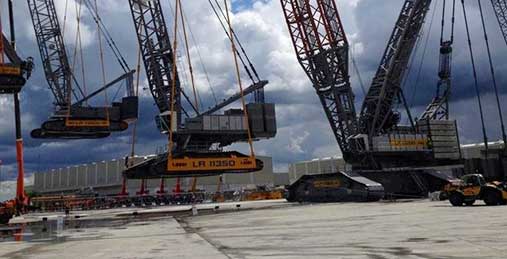After Years of Declines, Construction Employment Stable Since Early 2010; Declines in Public Sector Demand Likely to Drag on Employment Levels for Rest of Year, Economist Predicts The construction industry added 5,000 jobs in April while the industry's unemployment rate declined slightly to 17.8 percent, nearly twice the national average, according to an analysis of new federal employment data released today by the Associated General Contractors of America. Association officials said the figures continue a year-long trend of little change in construction employment after years of steep declines and predicted the stagnation is unlikely to change soon. “The construction industry … Read more
Construction Rallies as Industry Spending Increases by 1.4% in March to a Seasonally Adjusted Annual Rate of $769 B
Construction Economist Cites Increases in Most Nonresidential Segments, Predicts Future Private Sector Increases, Cautions Public Sector Spending is Likely to Decline Construction spending bounced back from an 11-year low in March, increasing by 1.4 percent to a total seasonally adjusted annual rate of $769 billion, according to an analysis by the Associated General Contractors of America of new Census Bureau data released today. Association officials cautioned however that the industry remains weak, noting that total construction spending remains 6.7 percent lower than a year ago and 37 percent lower than the March 2006 peak. “It is encouraging to see increases … Read more
Construction Employment Increases in 138 Out of 337 Metro Areas, AGC Says
Construction employment increased in 138 out of 337 metropolitan areas between March 2010 and March 2011, decreased in 153 and stayed level in 46, according to a new analysis of federal employment data released today by the Associated General Contractors of America. But association officials said that the industry's five-year employment slump is far from over, and could worsen as public construction winds down. “Even with more metro areas adding jobs than in any 12-month period since November 2007, the fact is most areas are far below previous construction employment peaks,” said Ken Simonson, the association's chief economist. “With federal … Read more
Architecture Billings Index in Holding Pattern
Business Conditions Stronger at Midwest Firms through First Quarter WASHINGTON, D.C. — The first quarter of 2011 has seen the Architecture Billings Index (ABI) remain virtually unchanged and right at, or slightly above, the break-even level. As a leading economic indicator of construction activity, the ABI reflects the approximate nine to twelve month lag time between architecture billings and construction spending. The American Institute of Architects (AIA) reported the March ABI score was 50.5, a negligible decrease from a reading of 50.6 the previous month. This score reflects a modest increase in demand for design services (any score above 50 … Read more
AGC Reports Construction Recovery Spotty, Variable
Construction employment decreased in 27 states and the District of Columbia between February and March, while 33 states lost construction jobs during the past 12 months, the Associated General Contractors of America reported in an analysis of state employment data released by the Labor Department. Association officials said the data show that construction remains gripped in a depression that merits urgent corrective actions at federal and state levels. “These data show that recovery is spotty and variable in construction, as the location and number of states with job gains retreated from the levels in February,” said Ken Simonson, the association's … Read more










 Join our thriving community of 70,000+ superintendents and trade professionals on LinkedIn!
Join our thriving community of 70,000+ superintendents and trade professionals on LinkedIn! Search our job board for your next opportunity, or post an opening within your company.
Search our job board for your next opportunity, or post an opening within your company. Subscribe to our monthly
Construction Superintendent eNewsletter and stay current.
Subscribe to our monthly
Construction Superintendent eNewsletter and stay current.